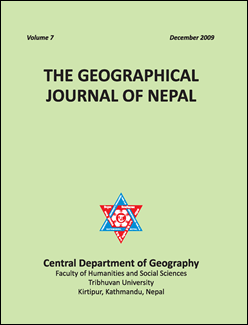Domestic Working as Gendered Space: A Study of Selected Localities in Kathmandu
DOI:
https://doi.org/10.3126/gjn.v7i0.17440Keywords:
Domestic Workers, Kathmandu ValleyAbstract
Domestic work is often considered as the women’s work, but in the recent years many males have entered into this occupation. It was a customary to confine women into domestic space and thereby improving a system of both spatial control and social control on identity by males. The present paper tries to examine the socio-economic status, livelihood strategy, gender division of labor in domestic workers and the power relation with the owners and their family. The analysis is based on focus group discussion, key informant survey, observation and questionnaire survey of 63 domestic workers at several localities of Kathmandu. The findings indicated that majority of domestic workers were of 15 to 19 years of age. Many used to leave their homes for their desire of better education in the urban area. However, in terms of a livelihood strategy this occupation had rarely helped their parents economically. There existed discrepancies in work hours and types of work between male and female domestic workers. Yet, a very positive sign was that majority of domestic workers were being sent to school and allowed to use their free time study and other social activities. So, there has been a change in attitude of the owners towards them.
The Geographical Journal of Nepal, Vol. 7, 2009: 23-32
Downloads
Downloads
Published
How to Cite
Issue
Section
License
© Authors




